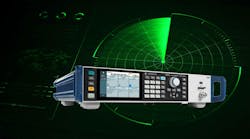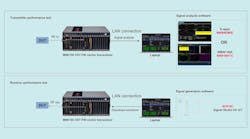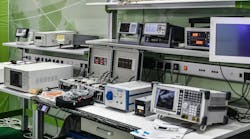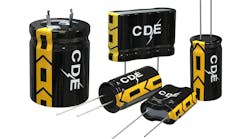Properly matching an antenna to a transceiver is one of the easiest ways to extend the signal range and battery life of a smartphone, laptop, or any other wireless device. According to the inverse square law of radio waves, only a 6-dB improvement in path loss from improved matching results in a device that transmits and receives at twice the range. A spectrum analyzer with a tracking generator can check an antenna match by looking at the voltage standing wave ratio (VSWR). But the best tool to make the impedance measurements needed to effectively design a matching network is a vector network analyzer (VNA).
Until recently, many engineers tasked with integrating an antenna into a wireless device had limited or no access to a VNA due to the historically high cost of these instruments. In fact, some have not been trained on how to use them. However, the advent of low-cost, portable VNAs coupled with intuitive PC software has made it easier and more affordable to perform antenna matching to improve the performance of wireless devices.
In this article, we’ll present a straightforward process for antenna matching using a portable VNA. A similar process can be used for many other kinds of impedance matching needed to maximize power transfer between components in a system with high-frequency signals, or to check transmission-line design or characteristic impedance.
Agents of Signal Power Decline
Two primary factors that reduce the signal power transferred between a source and load, such as in a transceiver and antenna system, are signal reflections and power-dissipation losses. Impedance mismatches between an antenna and transceiver cause signal reflections at the feed point of the antenna, which are either absorbed back by the source or dissipated by lossy transmission lines and components.
Such reflections result in dramatically reduced signal range, dropped data packets, and wasted battery life. They can even damage the transceiver source if the reflected power is too high—an extremely dangerous situation in high-power applications.
Maximum power transfer between a source and a load occurs when their resistances are the same, or in the case of ac circuits, when their impedances are complex conjugates of one another. For example, some transceivers and antennas are specifically designed with impedances of 50 Ω (resistive) at their inputs (or outputs). In that case, they can usually be directly integrated and connected with 50-Ω transmission lines and achieve close to maximum power transfer.
In other cases, the input impedance of the antenna or load is not 50 Ω by design, or some imaginary part of the impedance (i.e., reactance) is unaccounted for that results in a mismatch. In this situation, a matching network is used to match the antenna, including its feed line, to the impedance of the source.








